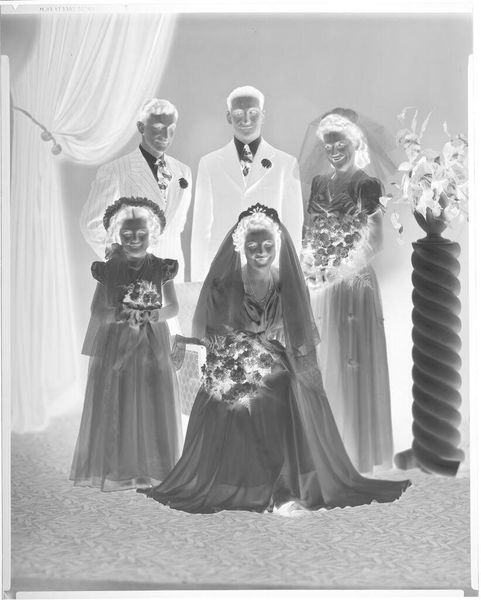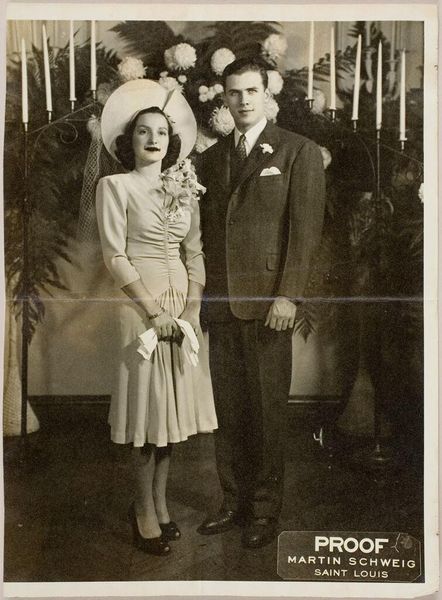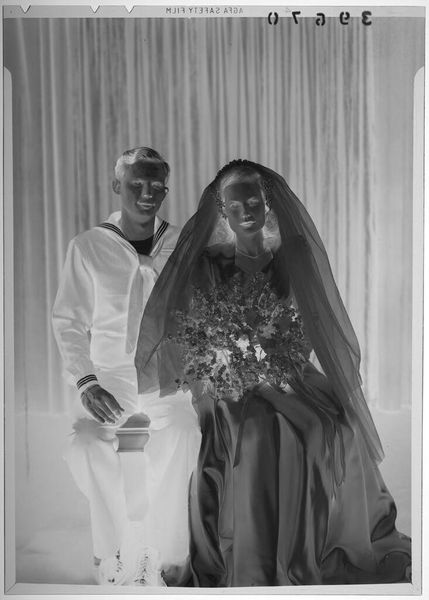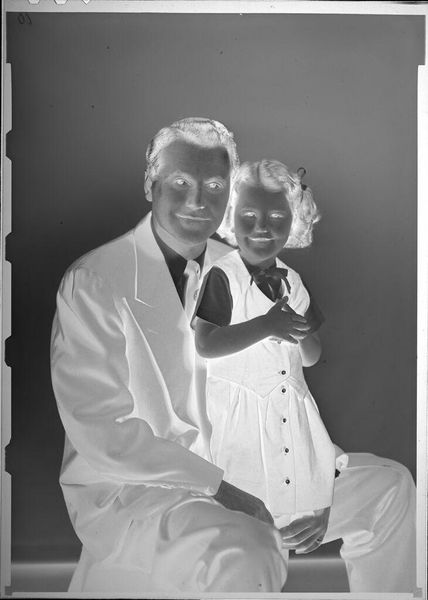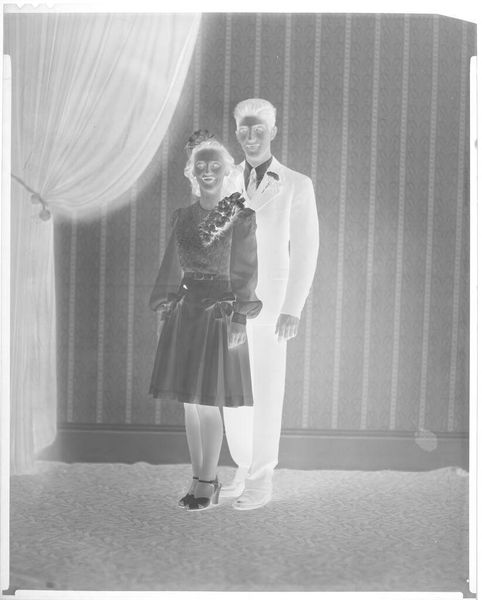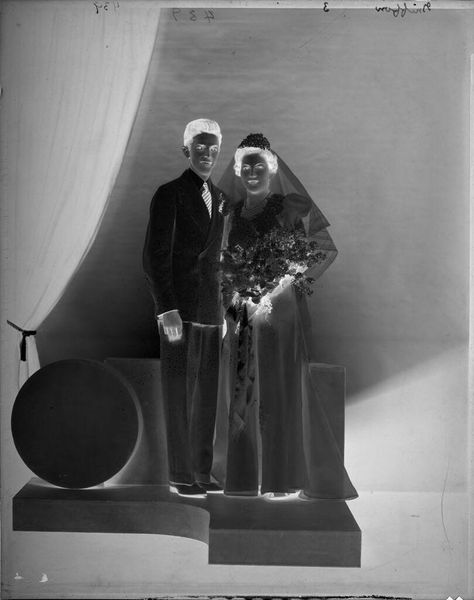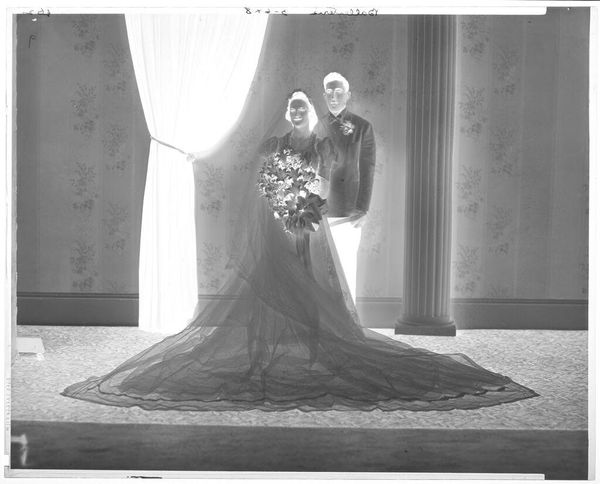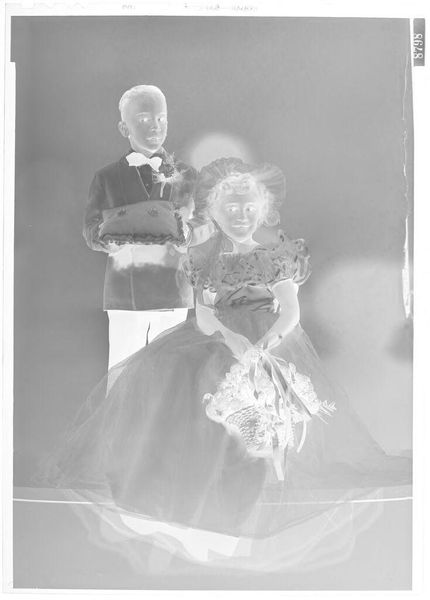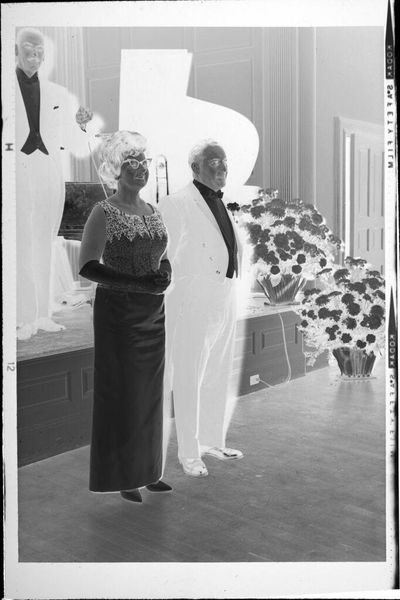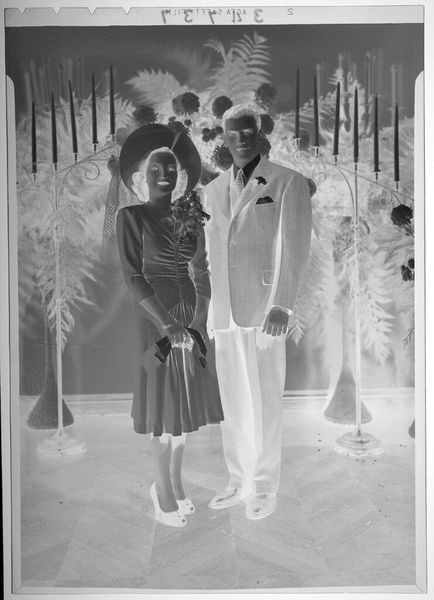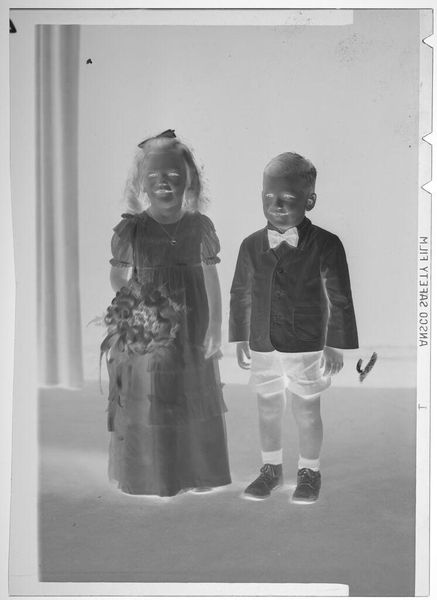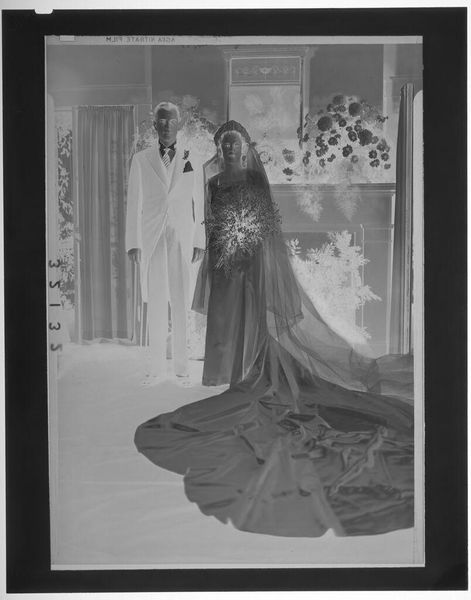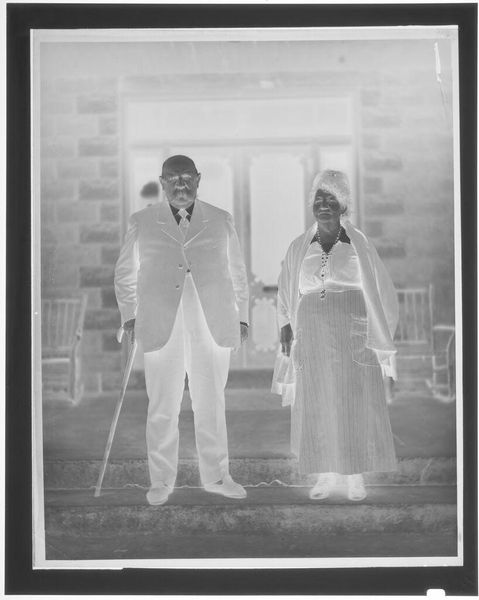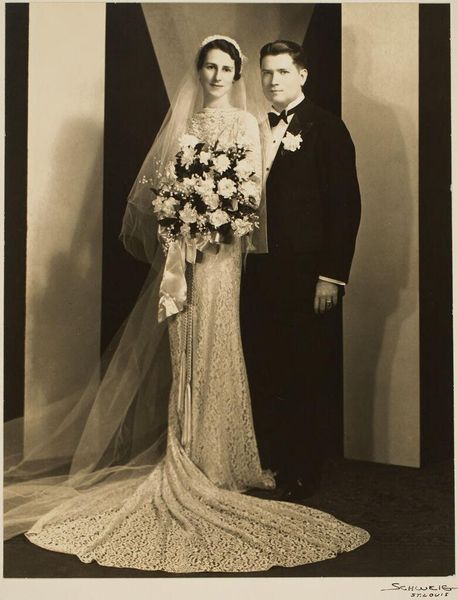
Abu Zahr and his wife. Studio Shehrazade, Saida, Lebanon, 1973-74. Hashem el Madani 2007
0:00
0:00
Dimensions: image: 392 x 265 mm
Copyright: © Akram Zaatari, courtesy Hashem el Madani and Arab Image Foundation, Beirut | CC-BY-NC-ND 4.0 DEED, Photo: Tate
Editor: This is "Abu Zahr and his wife," a black and white photograph taken by Hashem el Madani in Lebanon, sometime around 1973-74. There's something so endearing, yet also stiff and formal about it. What does this photograph tell us about that time and place? Curator: It’s a fascinating glimpse into the social rituals of mid-century Lebanon. These studio portraits, common across the Middle East, acted as powerful declarations of identity and status. The backdrop and posed nature speak volumes about constructed images of marriage. How does the presentation challenge or affirm stereotypes, do you think? Editor: I guess it challenges stereotypes by showing a specific, personal image instead of a generalization. It’s so intimate in a way, even though it's posed. Curator: Exactly. The photograph becomes a document of personal history intertwined with broader social practices. It makes you wonder about the power dynamics at play in constructing such images for public consumption. Editor: It's interesting how a simple portrait can reveal so much about culture and society. Curator: Indeed, it makes you consider the political role of imagery in everyday life.
Comments
tate 6 months ago
⋮
http://www.tate.org.uk/art/artworks/zaatari-abu-zahr-and-his-wife-studio-shehrazade-saida-lebanon-1973-74-hashem-el-madani-p79450
Join the conversation
Join millions of artists and users on Artera today and experience the ultimate creative platform.
tate 6 months ago
⋮
“Wedding pictures were taken the week following the ceremony. The women would bring their wedding dresses along with them and I would provide plastic flower bouquets and white gloves. In general, these photographs were intended for enlargement so I would shoot wedding photographs on 4 × 5 inch negatives.” Gallery label, June 2011
